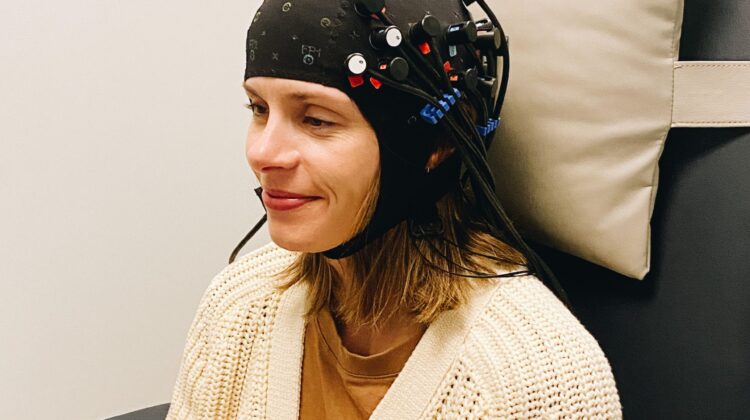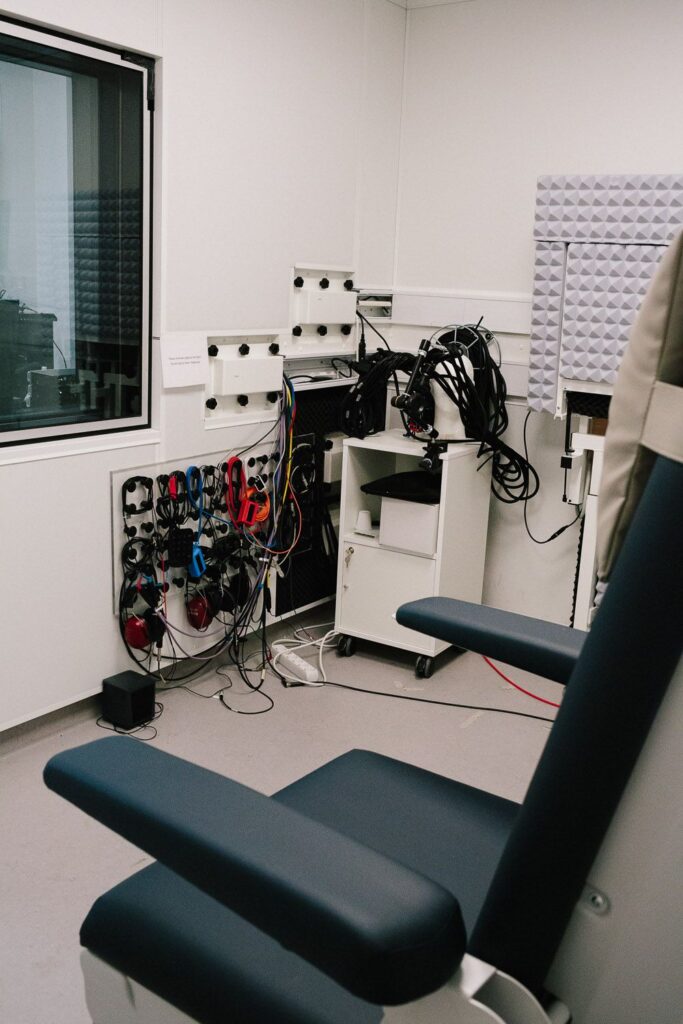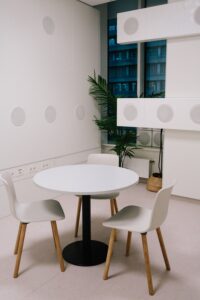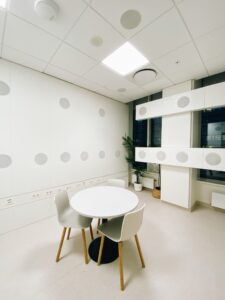
Copenhagen Hearing and Balance Center Audiological Research Facilities are part of Rigshospitalet’s new North Wing which officially opened on Tuesday 14 January 2020 with optimum room acoustics. The new wing of 54,700 m2 was designed to cater to the needs of patients and their families and includes 196 private rooms and 33 high-tech operating theatres.

Assistant Professor at DTU Health Tech, Abigail Kressner who focuses mostly on the areas of speech intelligibility and spatial perception (particular focus on listeners using hearing aids and cochlear implants), as well as hearing instrument signal processing – has allowed us to look into a more specialized healthcare area where the room acoustics are of great importance.
In the following paragraphs Prof. Kressner describes the new facilities:
CHBC
At the Copenhagen Hearing and Balance Center at Rigshospitalet (CHBC), we are building bridges between daily clinical treatment and world-class MedTech research. A cornerstone of this center is a long-running collaboration between the clinicians at Rigshospitalet and the engineers at DTU Hearing Systems. This collaboration is facilitated by a small DTU research unit within CHBC that consists of jointly employed faculty and researchers together with brand-new, research-dedicated state-of-the-art facilities.
The sound booth
The dedicated research facilities at CHBC consist of both a fully equipped sound booth and a clinically oriented spatial hearing lab. The sound booth has, first and foremost, been designed to mimic the functionalities of both the clinical booths at CHBC and the research booths at DTU in Lyngby, effectively facilitating synergies between the two domains.

We go above and beyond this by outfitting the booth with equipment that will help to catalyze brand-new, clinically oriented research streams. The base setup includes an otoscope, a middle ear analyzer, and the Affinity Compact audiometer and hearing aid analyzer, as well as a loudspeaker and head and torso simulator (HATS) for free-field testing.
On top of this, we have a Biosemi system supplemented with tiptrodes and tympanic membrane electrodes—making both electroencephalography (EEG) and electrocochleography (ECochG) possible—as well as a NIRScout for functional near-infrared spectroscopy (fNIRS).
Taken altogether, this modular setup allows for recording cortical, subcortical, and peripheral processes along the entire auditory pathway. We anticipate that by recording neural responses from different stages of the auditory system simultaneously, we can study the functional relationships between these stages in novel ways.
Room acoustics play a big role!
 Adjacent to the sound booth, we have outfitted the spatial hearing lab with a novel, state-of-the-art loudspeaker array consisting of 41 individual loudspeakers that have been embedded within the walls and ceiling of an otherwise ordinary clinical room that has been acoustically treated*. These loudspeakers are driven by a control computer and amplifiers that have been placed in the adjacent room, leaving the test space itself clean, clutter-free, and approachable for patients.
Adjacent to the sound booth, we have outfitted the spatial hearing lab with a novel, state-of-the-art loudspeaker array consisting of 41 individual loudspeakers that have been embedded within the walls and ceiling of an otherwise ordinary clinical room that has been acoustically treated*. These loudspeakers are driven by a control computer and amplifiers that have been placed in the adjacent room, leaving the test space itself clean, clutter-free, and approachable for patients.
 In a similar manner to the sound booth, the spatial hearing lab has been designed to facilitate synergies with DTU Hearing Systems, such that we can better link the work we do at DTU with virtual sound and virtual reality within the Audio Visual Immersion Lab (AVIL), as well as with listener behavior within the communication labs, to the patients at CHBC, giving us unparalleled possibilities to design, develop, and test novel ways to bring realism and ecological validity to the clinic.
In a similar manner to the sound booth, the spatial hearing lab has been designed to facilitate synergies with DTU Hearing Systems, such that we can better link the work we do at DTU with virtual sound and virtual reality within the Audio Visual Immersion Lab (AVIL), as well as with listener behavior within the communication labs, to the patients at CHBC, giving us unparalleled possibilities to design, develop, and test novel ways to bring realism and ecological validity to the clinic.
We anticipate that this lab space will help revolutionize spatial hearing and listener behavior diagnostics, accelerate the optimization of fitting procedures for hearing aid and cochlear implants, and catalyze rehabilitation that is more transferrable to daily life.
__________________________________________________________________
*The acoustical treatment of the room has been done with a suspended class A ceiling and wall constructions including both sound-absorbing and impact-resistant wall panels and extra bass sound absorbers hidden behind the wall panels in the construction.

